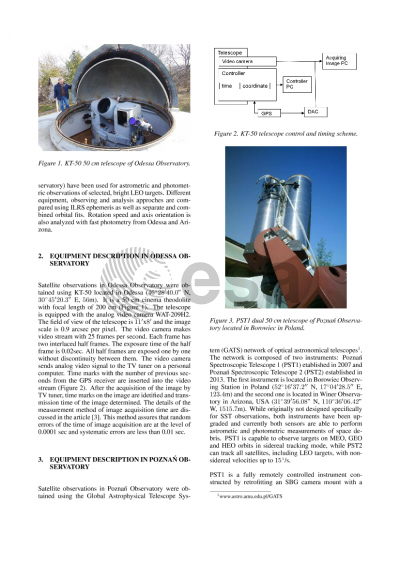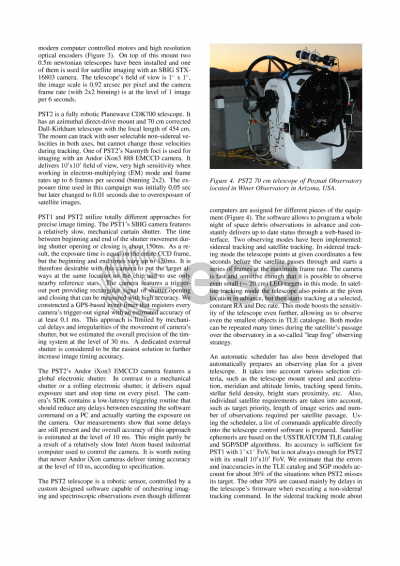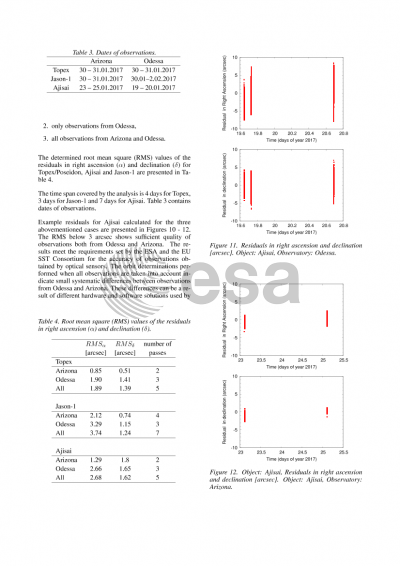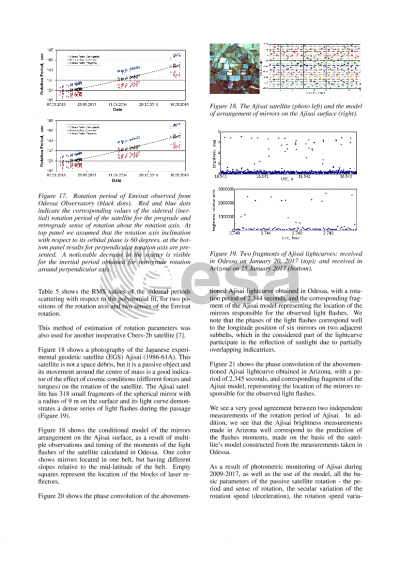Document details

Abstract
Optical facilities are widely applied for improvement of orbital parameters and positions of space debris objects. The tracking mode is optimal for the observations of low-earth-orbit (LEO) objects. In this work we presented analysis of the optical observations of space objects (SOs) that were made from the spatially distant stations of Polish and Ukrainian observatories located in Pozna?, Arizona and Odessa.
In the Astronomical Observatory of Odessa University, the observations were obtained by using KT-50 telescope with 50-cm mirror, the time resolution was 0.02 second. The observations in the tracking mode allow simultaneous measuring of the target’s coordinates and its brightness for further determination of orbit and spin parameters. In the Astronomical Observatory of Adam Mickiewicz University in Pozna? the observations were obtained using PST1 50-cm telescope in Poland and PST2 70-cm telescope in Arizona. Pozna? station is using a wide field-of-view camera and a sidereal tracking mode whereas Arizona station is using a narrow field-of-view camera and a satellite tracking mode.
By using the obtained data series, we estimated the orbital parameters for the SOs on different altitudes. We made analysis of the accuracy of measured visible coordinates of satellites for each station. The error estimates of the prediction of a satellite position on the basis of the observations with different data sets for the reference orbit are given. Such estimates are necessary, because the robust propagation of orbits is very important for detection of close conjunctions of space debris.
Beside parameters of orbital motion, we present the methods to estimate the spin parameters of big space debris objects as a result of fast photometry. Photometric monitoring is a good instrument for remote diagnostics of satellites’ rotation. This information is essential, for example, for the attempt of active removal of big space debris. There is a collection of 7.5 thousand photometric curves for more than 500 objects obtained from 2005 to 2016 in Odessa observatory. For several inactive satellites the variations of sidereal spin periods and spin axis directions were determined on base of this atlas. In paper the joint photometric data and the rotation of the big defunct satellite Envisat was analysed. The deceleration of its rotation during 4 years was studied together with the determination of the spin axis orientation. Changes in the spin period of the inoperative satellite Topex/Poseidon are also discussed.
Preview














